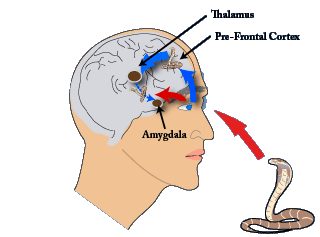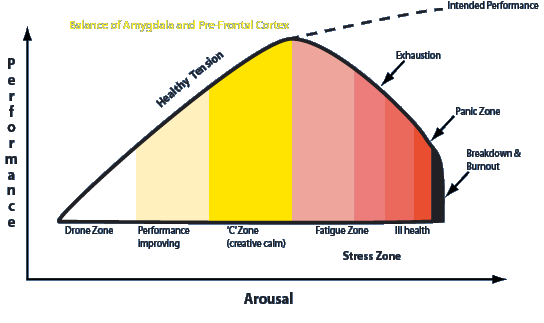
The nature of stress related problems
Stress can be the result of many different influences such as work pressure, family difficulties or chemical imbalance in the brain. People vary in their susceptibly to stressors and this can be because we all have different beliefs or ideas about the nature of life or 'success' and 'failure'. A certain amount of stress is necessary to bring us up to our personal peak performance level. The diagram on the right illustrates a mechanism of the brain, showing how a perceived, external threat (the Cobra) triggers 'immediate' survival behaviours which are stored in the Amygdala, a primitive brain component which is found in all living creatures. Information reaches the Amygdala rapidly (the red arrows) as it is a basic survival tool. This triggers our in-built 'fight or flight' responses.

